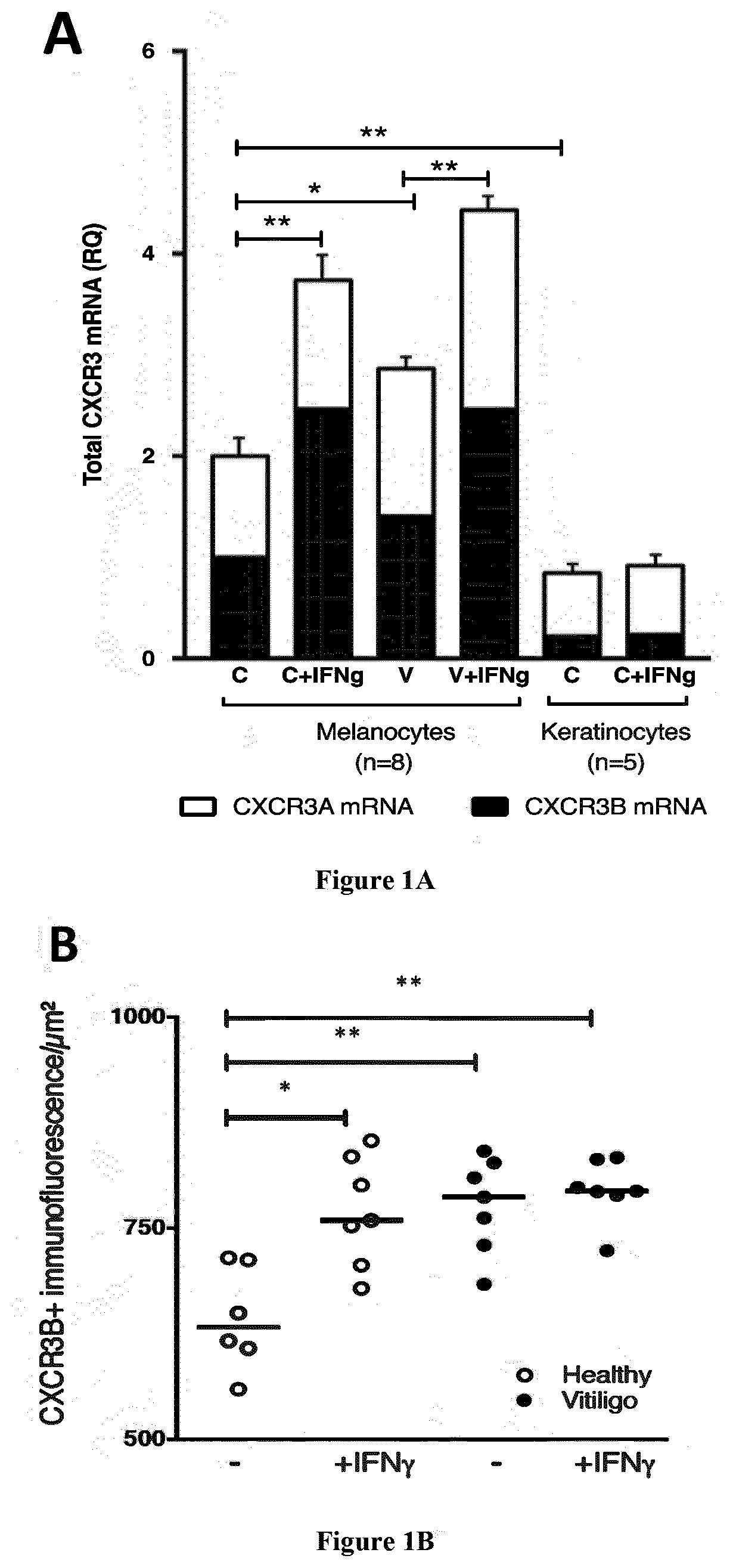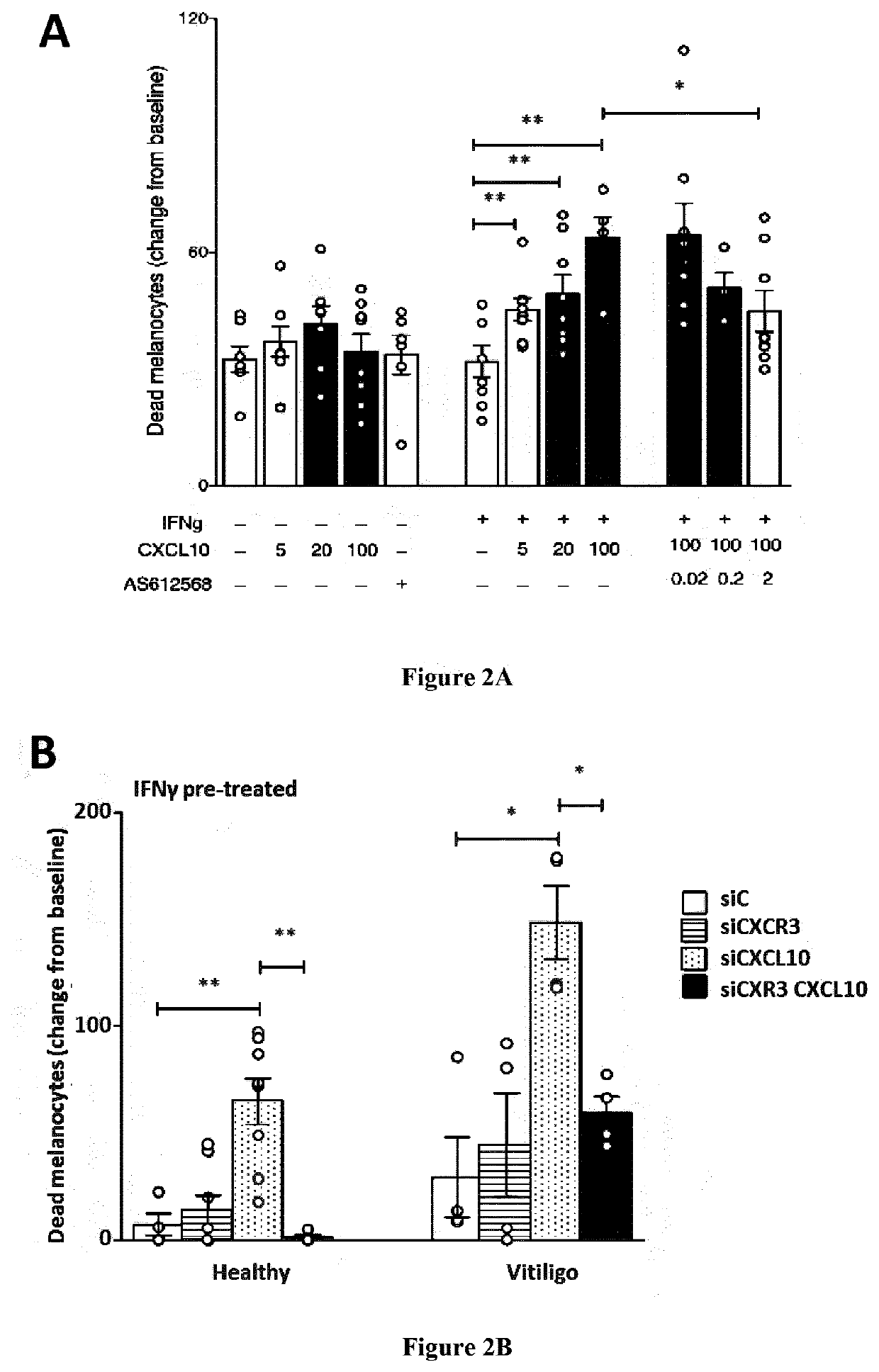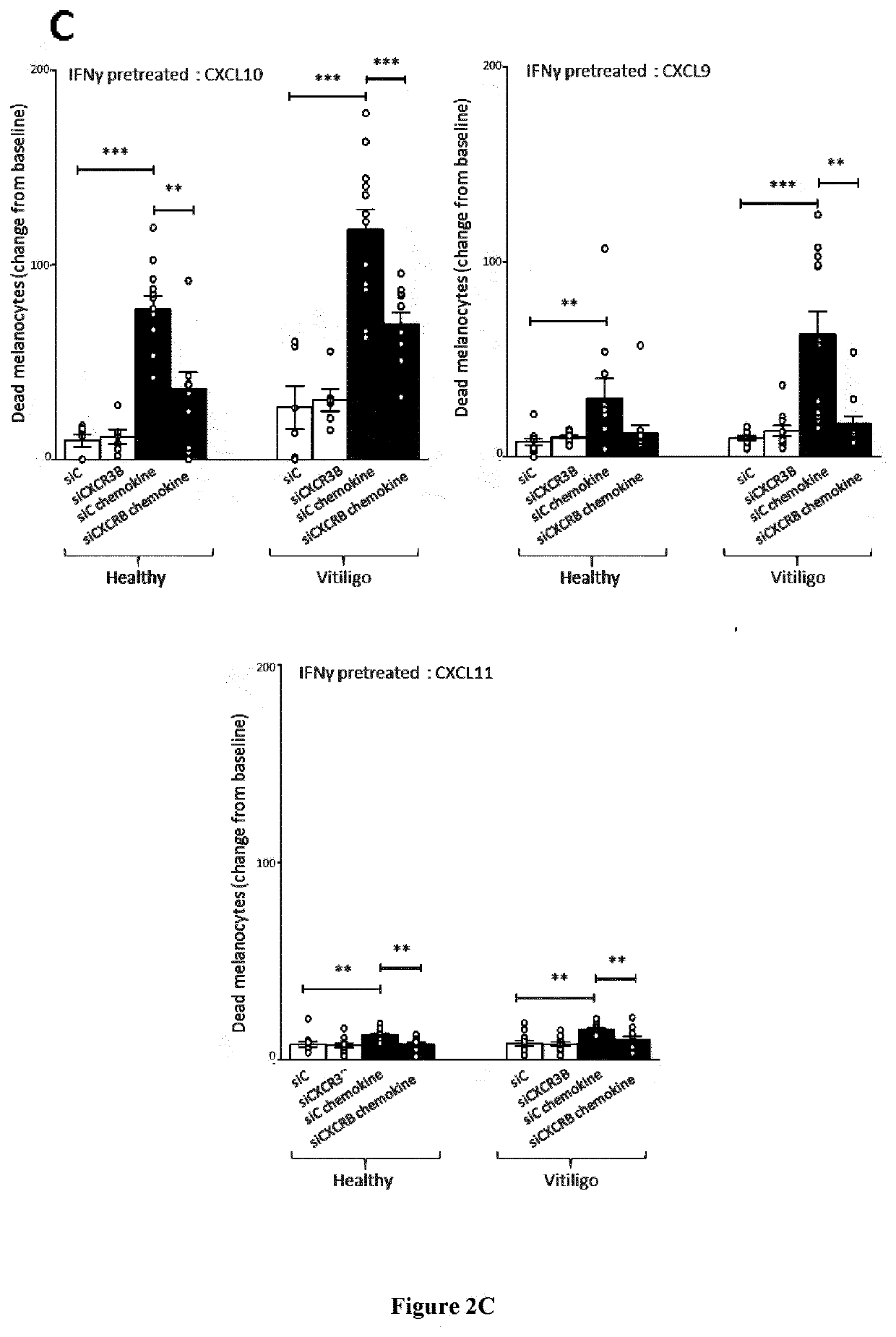Methods and compositions for treating vitiligo
a technology of vitiligo and composition, applied in the field of dermatology, can solve the problems of vitiligo consisting in vitiligo, repigmentation, proliferation of new melanocytes, and inability to achieve in most cases
- Summary
- Abstract
- Description
- Claims
- Application Information
AI Technical Summary
Benefits of technology
Problems solved by technology
Method used
Image
Examples
example
Material & Methods
Detection of CXCR3B on Human Melanocytes
[0042]Melanocytes from healthy and vitiligo subjects were stimulated with 50 ng / ml IFNγ for 24 hrs and cell pellets harvested for RNA extraction. Real-time qPCR was performed using specific primers directed against CXCR3 total or against CXCR3B and results normalized to the house-keeping gene. mRNA levels were compared to healthy human keratinocytes stimulated or not with IFNγ. In separate experiments, melanocytes were grown on cover slides in 12-well plates and stimulated with IFNγ as above. 24 hours later, they were fixed at RT with 1% paraformaldehyde, saturated in PBS 3% BSA containing 3% goat serum for 1 hr and incubated overnight at 4° C. with primary antibody directed against CXCR3B (1:200) (Proteintech, USA). The next day, slides were washed 3× with PBS 3% BSA 0.1% Tween20 prior incubation for 1 hr with secondary antibody (goat anti mouse AF594, 1:1000 at RT) and mounted with Prolong Gold Antifade reagent with DAPI (T...
PUM
| Property | Measurement | Unit |
|---|---|---|
| pH | aaaaa | aaaaa |
| area | aaaaa | aaaaa |
| time | aaaaa | aaaaa |
Abstract
Description
Claims
Application Information
 Login to View More
Login to View More - R&D
- Intellectual Property
- Life Sciences
- Materials
- Tech Scout
- Unparalleled Data Quality
- Higher Quality Content
- 60% Fewer Hallucinations
Browse by: Latest US Patents, China's latest patents, Technical Efficacy Thesaurus, Application Domain, Technology Topic, Popular Technical Reports.
© 2025 PatSnap. All rights reserved.Legal|Privacy policy|Modern Slavery Act Transparency Statement|Sitemap|About US| Contact US: help@patsnap.com



